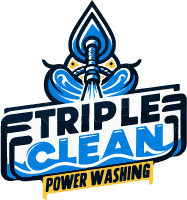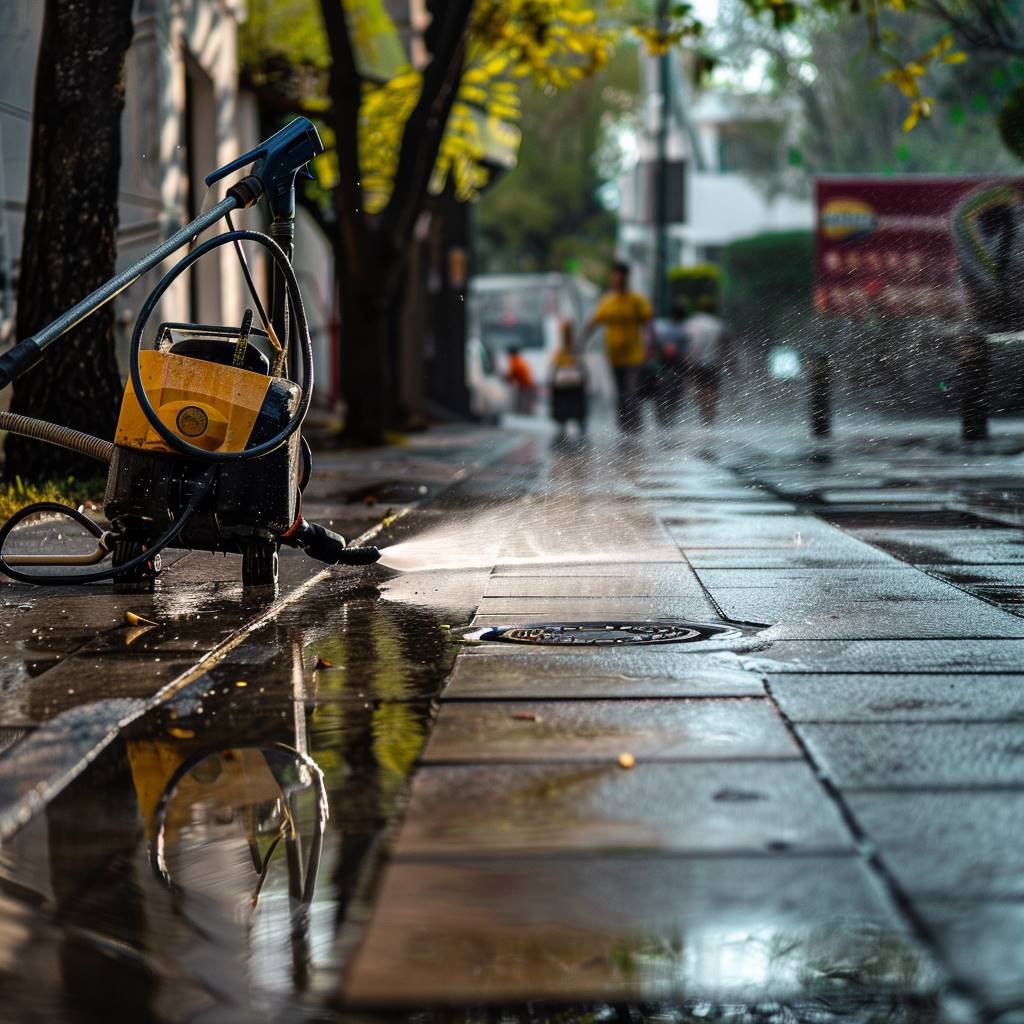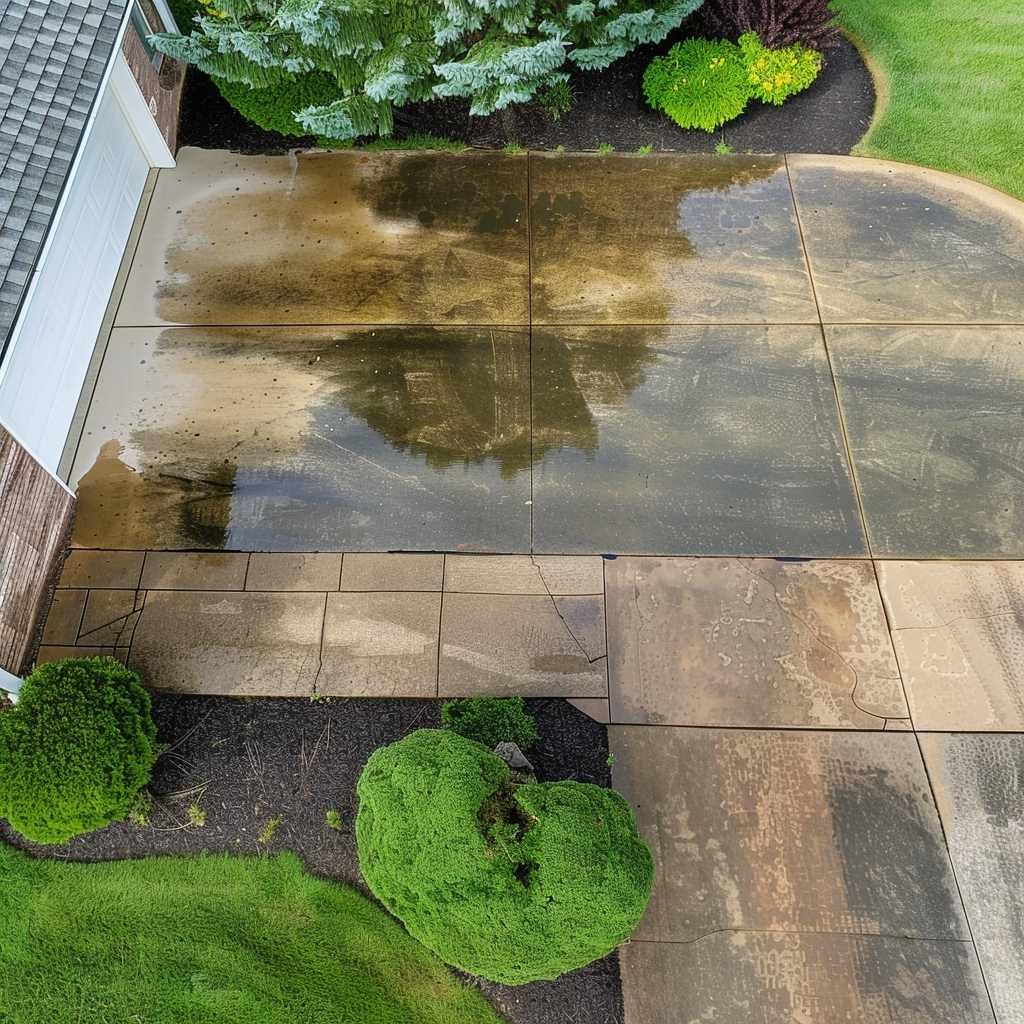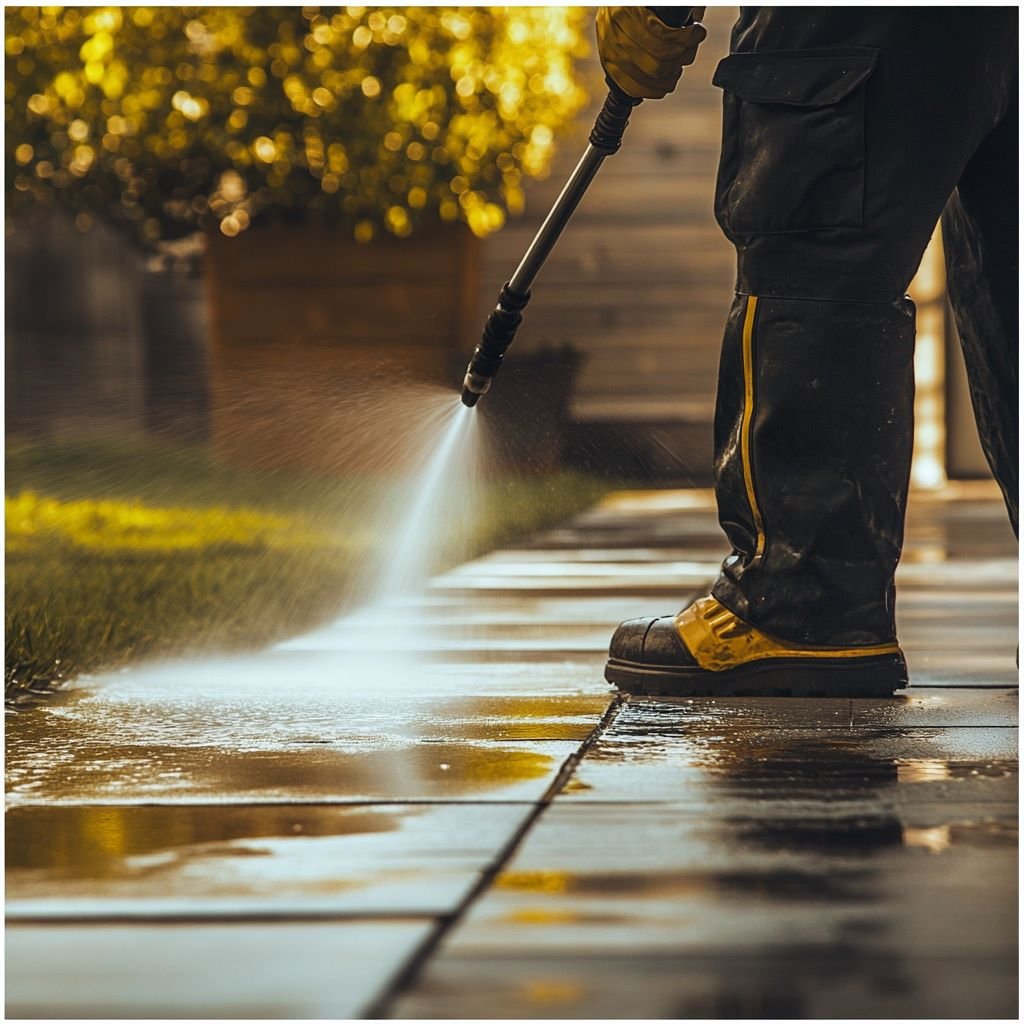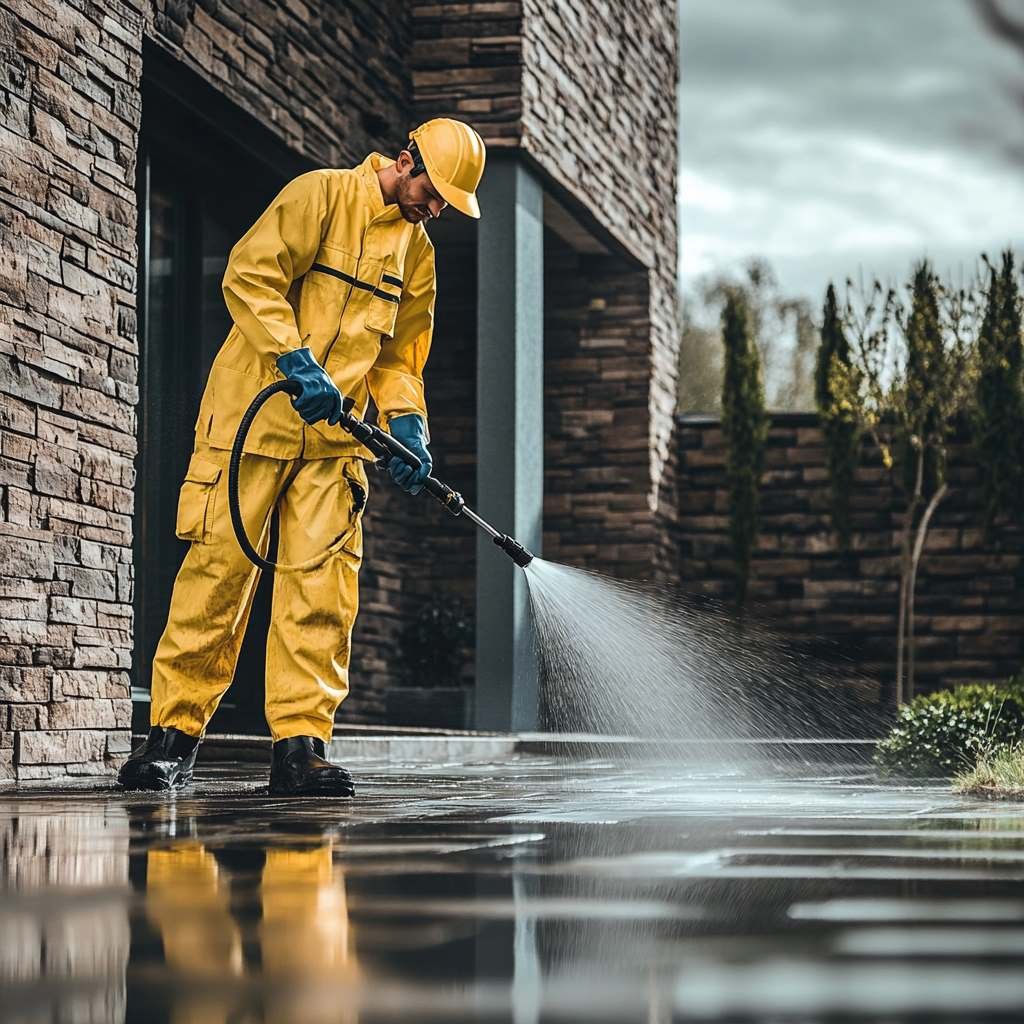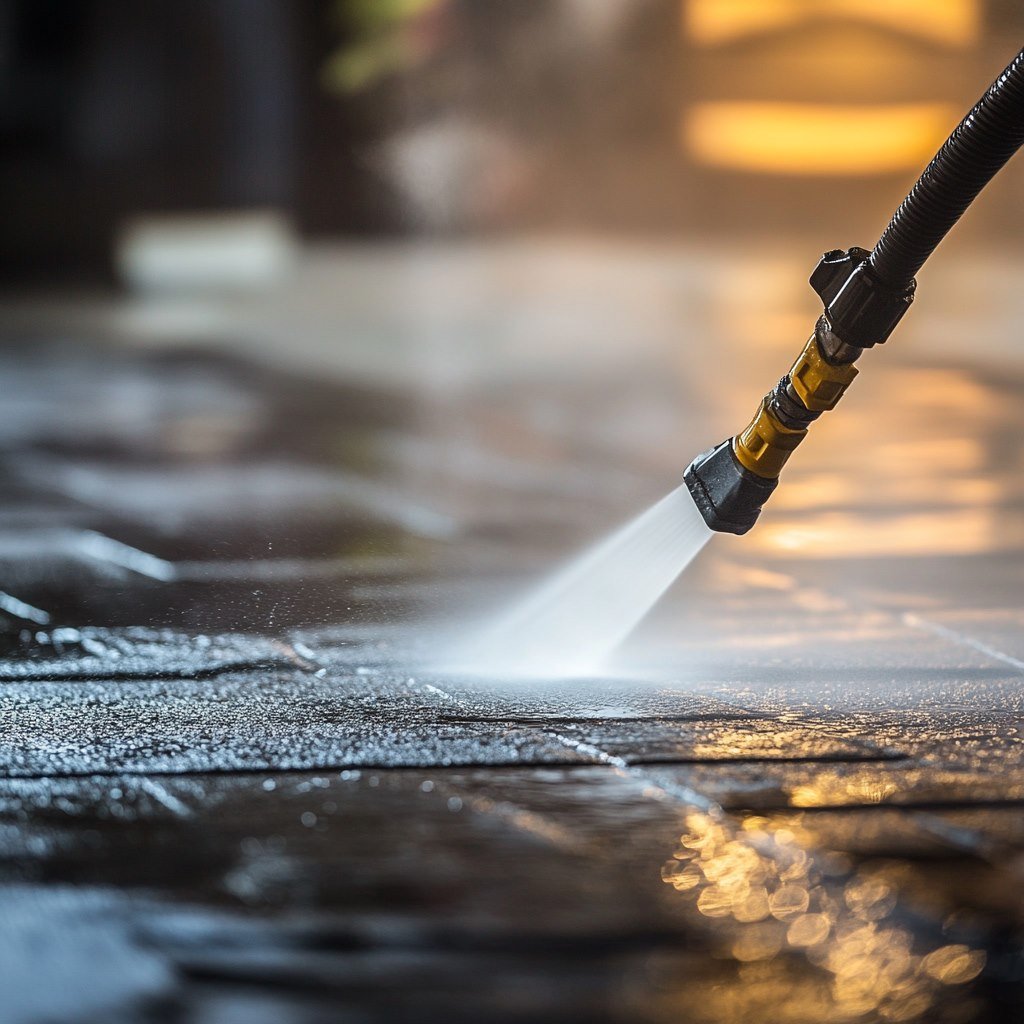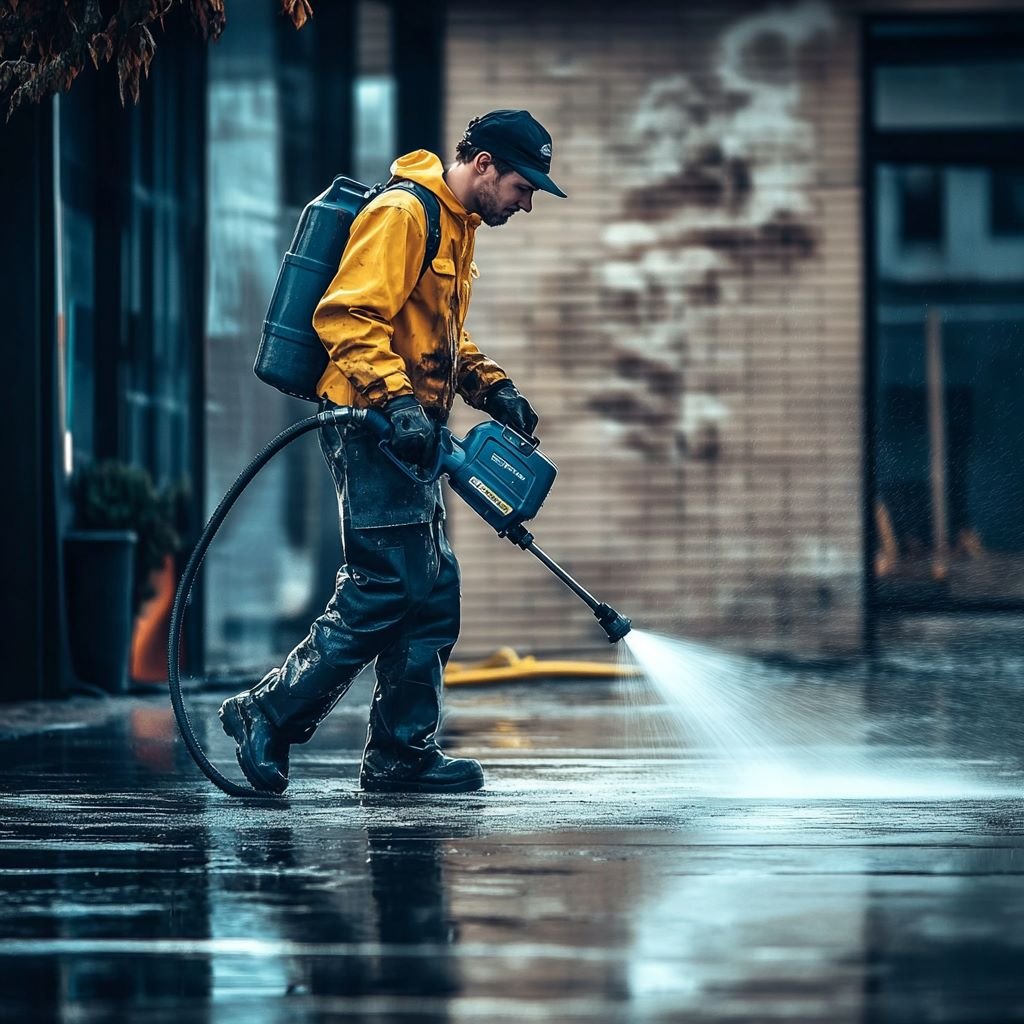Understanding Pressure Washing in Washington
Pressure washing in Washington requires attention to local regulations, climate conditions, and common contaminants affecting patios.
Table of Contents
Regulations and Permits
In Washington, it’s important to follow regional and local guidelines when pressure washing your patio. Many areas have specific water usage and runoff rules to protect the environment.
Some cities may require permits, especially if you use large quantities of water or commercial equipment. Check with your municipality for detailed requirements. Renting or hiring professional services may also require adherence to regulations, so always verify compliance to avoid fines.
Best Times for Pressure Washing
Washington’s climate features mild, wet winters and dry summers. Pressure washing is most effective in the late spring through early fall when temperatures are higher and weather conditions are drier.
Avoid pressure washing during the wet season as moisture can lead to rapid accumulation of dirt and algae. Choose sunny, warm days to ensure the patio dries quickly and thoroughly, preventing mold and mildew growth.
Identifying Common Patio Contaminants
Patios in Washington often suffer from moisture-loving contaminants. Due to the damp climate, common issues include mold, mildew, algae, and moss.
Pollutants such as bird droppings, tree sap, and decaying leaves can also be problematic. Identifying the specific contaminants on your patio will help determine the appropriate cleaning method.
For example, algae and mold respond well to biocides, while general dirt and grime can be removed with high-pressure water.
Choosing Your Pressure Washer
Selecting the right pressure washer for your patio is key to effective cleaning. You’ll need to consider the types of pressure washers available, the appropriate nozzle, and safety features to look for.
Types of Pressure Washers
Pressure washers come in two main types: electric and gas. Electric models are lighter, quieter, and more suitable for smaller tasks like patios or decks. They usually deliver up to 2,000 psi, ideal for most patio cleaning tasks.
Gas pressure washers are more powerful, often exceeding 3,000 psi. They are better suited for larger or heavily soiled areas. However, they are noisier and require more maintenance. Choose a model based on your patio’s size and dirt level.
Selecting the Right Nozzle
Nozzles control the spray pattern and pressure of the water. They are usually color-coded for easy selection:
- Red (0 degrees): Delivers a pinpoint stream; risk of damage is high.
- Yellow (15 degrees): For heavy-duty cleaning.
- Green (25 degrees): General cleaning for patios.
- White (40 degrees): Light cleaning and rinsing.
- Black (soap): For applying detergent.
Selecting the right nozzle helps prevent damage. For most patios, the green or white nozzles are best. Inspect nozzles regularly for cracks or debris to ensure efficient cleaning.
Pressure Washer Safety Features
Safety is crucial when using a pressure washer. Look for models with the following safety features:
- Automatic Shut-Off: Turns off the pump when the trigger is not engaged.
- Safety Lock: Prevents accidental discharge.
- Thermal Relief Valve: Protects the pump from overheating.
- Ground Fault Circuit Interrupter (GFCI): Reduces the risk of electric shock for electric models.
Wear protective gear like gloves and goggles when operating a pressure washer. Follow the user manual for safe operation to avoid injuries or equipment damage.
Preparation for Pressure Washing
Before pressure washing your patio, you must clear the area, protect your landscaping, and pre-treat any stains. This ensures a thorough and effective cleaning process.
Clearing the Patio Area
Removing all furniture, potted plants, and other items from the patio. This will prevent damage to your belongings and allow you to clean the entire surface without obstruction.
Inspect the patio for loose debris such as leaves, twigs, and dirt, and sweep them away with a broom.
Check for any objects, such as rocks or toys, that could obstruct the pressure washing. Remove these to prevent any mishaps.
Taking these steps ensures a clear working area and helps you get the best results from your pressure washing.
Protecting Surrounding Landscaping
Pressure washing can be intense, and the high-pressure water can damage nearby plants. To shield your surrounding landscaping from the water spray and cleaning agents, cover it with plastic sheeting or drop cloths.
Use stakes or weights to hold down the coverings so they don’t blow away during washing. If you have delicate plants, ensure they have extra protection by temporarily moving them away from the patio.
By protecting your landscaping, you minimize the risk of damage and keep your garden looking its best.
Pre-Treatment of Stains
Before pressure washing, it’s crucial to pre-treat any visible stains on the patio. Identify areas with oil, grease, or mildew and apply an appropriate cleaning solution.
For oil and grease stains, a degreaser works well. Follow the cleaner instructions for best results.
For mildew, use a mildewcide mixed with water. Let the solution penetrate and loosen the spots for about 10-15 minutes. Use a brush to scrub particularly tough spots.
Pre-treating stains ensures they are properly addressed and enhances the effectiveness of your pressure washing.
The Pressure Washing Process
Using a pressure washer effectively involves knowing how to operate the machine and employ the best cleaning techniques. Follow these steps for best results without damaging your patio.
Operating the Pressure Washer
Before you start, ensure your pressure washer is set up correctly. Secure garden hose and check for leaks. If you plan to use soap, fill the detergent tank.
Plug in your pressure washer or ensure it has enough fuel if it’s gas-powered. Always read the user manual for specific instructions related to your model.
Start with a wide-angle nozzle to prevent damage. Begin at low pressure and gradually increase as needed. Hold the wand about 2-3 feet from the surface to avoid causing marks or damage.
Wear safety gear like goggles and gloves. Never point the nozzle at yourself or others.
Effective Washing Techniques
Use a sweeping motion while washing. Hold the nozzle at a 45-degree angle to the surface to avoid pitting the material. Maintain a consistent distance from your patio to achieve even cleaning.
For stubborn stains, pre-treat with detergent. Let the solution sit for a few minutes before rinsing. Scrub with a wire brush if needed but avoid excessive force.
Rinse thoroughly to remove all detergent and dirt. Inspect your patio afterward for any missed spots and spot-clean as necessary. Ensure the patio dries completely before moving furniture back.
Post-Washing Maintenance
After pressure washing your patio, it is important to protect and maintain the surface. Applying a sealant will help preserve its quality, and regular cleaning will keep it looking its best.
Sealing the Patio
Sealing the patio after pressure washing is essential to ensure its longevity.
Start by allowing the patio to dry completely, which can take 24 to 48 hours depending on the weather.
Choose a high-quality sealant for your patio material, whether stone, concrete, or brick.
Before applying the sealant, clean the patio surface of any loose debris.
Use a paint roller or pump sprayer to apply the sealant evenly. For the best results, follow the manufacturer’s instructions.
Let the sealant dry undisturbed for the recommended time, usually around 24 hours. Regularly check for wear and reapply the sealant as needed every 1-2 years.
Routine Patio Cleaning Tips
Keeping your patio clean regularly prevents buildup that can damage the surface over time. Simple maintenance routines can go a long way.
Sweep the patio weekly with a broom to remove leaves, dirt, and other debris.
Use a mild detergent and a stiff brush to scrub gently for stubborn stains.
During Washington’s wet months, moss and algae can grow on the patio surface.
Apply a moss and algae cleaner designed for exterior surfaces if needed. Always test in a small area first to ensure it does not damage your patio.
Additionally, avoid using harsh chemicals that can degrade the sealing over time.
Frequently Asked Questions
A pressure setting between 500 to 1500 PSI is generally recommended for most patios.
Softer surfaces like cedar or pine should use lower PSI, around 500 to 600. For harder, pressure-treated wood, around 1200 to 1500 PSI work best.
Before pressure washing, clear the patio of all furniture and debris. Sweep the surface to remove loose dirt.
Apply a detergent specifically designed for pressure washing and let it sit for a few minutes. This helps in breaking down stubborn stains and dirt.
Sealing your patio after pressure washing is highly recommended.
This protects the surface from future stains and damage. It also extends the lifespan of your patio material by adding a protective layer against moisture and UV rays.
Using the right attachments can make a significant difference.
A surface cleaner attachment is highly effective for large, flat areas. A rotary nozzle or a wire brush attachment works well for corners and tight spaces.
Always choose attachments compatible with your specific pressure washer model.
Typically, you should pressure wash your patio at least once a year. This frequency helps keep dirt, mold, and grime at bay.
Consider washing it two to three times a year in areas with heavier rainfall or more frequent use to maintain its look and safety.
